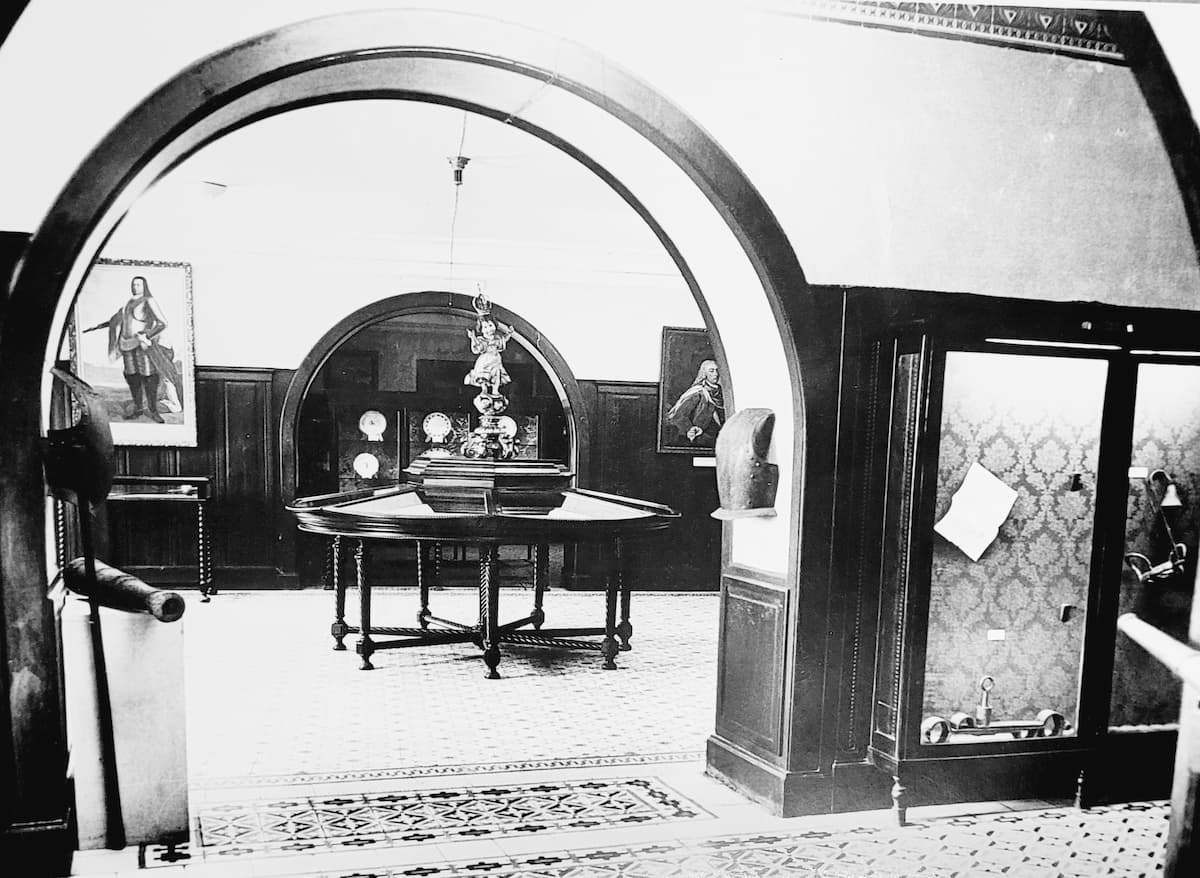Exhibition at the National Historical Museum refers to the city of Rio de Janeiro, 100 years ago: the opening happens day 18 de Mayo, from 11:30 a.m., concomitant with the delivery by Alerj of the Tiradentes medal to the museum.
From International Museum Day, 18 de Mayo, the exhibition “Rio 1922” will take the public to the city of Rio de Janeiro 100 years ago, when the National Historical Museum was created as one of the attractions of the International Exhibition of the Centenary of Independence.
Result of a collaborative curation, the exhibition presents aspects of the then capital of the Republic in a key year for Brazilian history. Gathering about of 100 items from the MHN collection, among paintings, photographs, objects, numismatic items, period clothing and furniture, seeks to set the tone of how people lived in the city and the challenges of the period.
To the exhibition coordinator, MHN architect Simone Kimura, “'Rio-1922' is a collective work, dedicated to the centenary celebration of the National Historical Museum, and was conceived and carried out out of love for museums”.
Sponsored by the Vale Cultural Institute, via the Federal Cultural Incentive Law, to exhibition is organized into four modules: “Dismounting the hill of the Castle”; “Rio delight”; “International Exhibition Commemorating the Centenary of Independence”; and “Creation of the National Historical Museum”.
The first module brings the modernization and beautification reforms of the city, started at the beginning of the 20th century, in order to bring it closer to European capitals, in special Paris. The most emblematic case of this phase was the dismantling of Morro do Castelo, place where the city was settled at the end of the 16th century, for the construction of pavilions for the exhibition of 1922, in the old region of Mercy.
the second module, “Rio delight”, presents the cultural and social context of Rio that year, from images and everyday items in the city.
The third module covers the International Exhibition Commemorating the Centenary of Independence, what happened in the city of Rio, between september 1922 and March 1923, and received millions of visitors. The public will be able to see the exhibition's large-scale plant up close., commercials of the time, rare moving images from the exhibition, in addition to items created especially for the occasion.
The creation of the MHN is reassembled in module four, with objects and images that tell a little about the museum's century-old history, which initially occupied only two rooms in the Grandes Indústrias pavilion at the international exhibition.
The “Rio-1922” Exhibition has the support of the Associação dos Amigos do MHN and the partnership of public institutions, like the Museum of the Republic, National Museum of Fine Arts and Audiovisual Technical Center; and will be on display until Dec. 2022 - with free entry.
Tiradentes Medal
Before the opening of the exhibition, the Legislative Assembly of the State of Rio de Janeiro (alerj) grants the Tiradentes Medal to the National Historical Museum, highest honor granted by Alerj to people and institutions that provided relevant services to the public cause in the State. For Deputy Luiz Paulo, project proposer, the award of the medal to the museum is justified because it is a “representative space and guardian of a large part of the collection of Brazilian history, of the State and City of Rio de Janeiro”.
In addition to awarding the medal, and respective diploma, ao MHN, honorable motions will be delivered to four former directors of the institution: the museologists Heloísa Duncan, Solange Godoy and Vera Tostes, and the historian Paulo Knauss. The Association of Friends of the MHN also receives an honorable motion.
“The delivery of the honor to the museum is a well-deserved birthday gift to celebrate the centenary of the institution”, points out the Deputy Director of the National Historical Museum, Aline Montenegro. “The museum consolidates, every day, as a reference in the field of history, of museology and heritage, This is also a tribute to all the teams that have done it throughout this century”.
About the MHN
The National Historical Museum (MHN) is a museum dedicated to the history of Brazil. Located in the historic center of the city of Rio de Janeiro (RJ), was created in the year 1922, by then President Epitacio Pessoa (1865-1942), as part of the celebrations of the centenary of the Independence of Brazil. Museum unit integrated into the structure of the Brazilian Institute of Museums (IBRAM), authority of the Ministry of Tourism, the MHN has a collection consisting of about 300 thousand archival items, bibliographic and museological. Its exhibition galleries range from the pre-Cabraline period to the contemporary history of the country.. The exhibition space is part of an architectural ensemble that is distributed over an area of 14 mil m², to which are added the more than 3 thousand m² of internal courtyards. The museum counts, yet, with galleries for temporary exhibitions and a souvenir shop. Committed to presenting its collections in the best possible way to the greatest number of people, the MHN serves public and private schools, as well as general visitors on special mediated visits.
Service
Museu Histórico Nacional
Address: Praça Marechal Âncora, s/nº – Center – RJ
Sign up to receive Event News
and the Universe of Arts first!
Phone: (21) 3299-0324 - reception
Operation: from wednesday to friday, das 10h às 17h, saturday and sunday, the 1:00 pm to 5:00 pm.
Entrance to the MHN is free, in view of the celebrations of their 100 years in 2022.
WebSite: mhn.museus.gov.br
Social networks: @museuhistoriconacional
Press information:
MHN Annual Plan 2022: BriefCom – Communications Advisory/Bia Sampaio: (21) 98181-8351/biasampaio@briefcom.com.br
Other MHN activities: mhn.comunicacao@museus.gov.br




